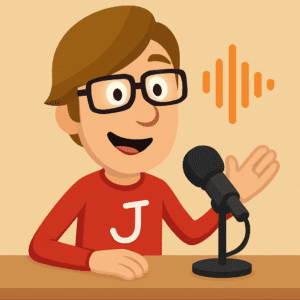🧠 Understanding -ed Adjectives:
Describing Internal Feelings
A complete lesson for intermediate learners — clear explanations, many examples, common errors, and in-class practice.
What are -ed adjectives?
Adjectives that end in -ed describe how someone feels inside. They show emotions,
personal reactions, or inner states. Think of -ed adjectives as windows into a person’s feelings. ❤️
- I’m confused — I feel confusion inside me.
- She’s excited — She feels excitement.
- They’re bored — They feel uninterested or tired.
Using the correct adjective ending makes your meaning clear. Mix up -ed and -ing and you may change your meaning completely.
Core ideas: Internal feelings
When you use an -ed adjective, you describe the person who feels the emotion. The feeling
happens to that person — it’s an internal, subjective state (temporary or ongoing).
- Internal focus: The feeling lives inside the person.
- Emotional or mental state: It can be short (surprised) or longer (depressed).
- Personal reaction: It shows how someone responds to an event or situation.
Examples of internal emotional states
Common -ed adjectives
How -ed connects to experience
-ed adjectives tell us the effect that something had on a person. For example, after a marathon,
you might say “I am exhausted”. The exhaustion is your internal feeling.
Using -ed adjectives helps you describe your emotions clearly and makes your English more natural.
The subject: the person who feels
-ed adjectives describe the subject — the person experiencing the feeling.
Correct structure often uses a linking verb (be, feel, look, seem) before the adjective:
- She is excited — she feels excitement.
- They were disappointed — they felt disappointment.
- He is annoyed — he experiences annoyance.
Common mistakes & how to fix them
Learners often use -ed to describe objects or situations. Remember: objects do not feel;
they cause feelings. Use -ing for causes (another lesson), and -ed for the person who feels.
Incorrect
- The movie was bored. ❌
- The book was interested. ❌
- The weather was tired. ❌
Correct
- I was bored by the movie. ✅
- She was interested in the book. ✅
- We were tired after the trip. ✅
Remember: the thing that causes the emotion usually takes -ing (the movie is boring),
and the person who feels it takes -ed (I am bored).
In-depth examples
“I am bored by the movie”
Structure: Subject + linking verb + -ed adjective. Here, I is the subject; am is the linking verb; bored is the internal feeling.
The phrase by the movie tells the cause.
Contrast: I am boring means you describe yourself as a dull person — different meaning!
“She was interested in the book”
Interested describes her internal feeling: curiosity or engagement. The book caused the feeling. It’s incorrect to say The book was interested.
-ed adjectives vs. past tense verbs
Both look the same, but their job is different: a past verb shows an action; an -ed adjective describes a state or feeling.
She finished her homework. (finished = action)
-ed adjective (feeling)
She was tired. (tired = feeling/state)
Quick test: if you can put very before the word (very tired), it’s usually an adjective.
Practice
A. Fill-in-the-blanks
- I am __________ by the long wait. (bored)
- She was __________ with her test score. (satisfied / disappointed)
- They are __________ about the new project. (excited / worried)
- We were __________ by the scary movie. (shocked / frightened)
Recap & final tips
- -ed adjectives describe how a person feels.
- Use -ing (another lesson) for the thing that causes the feeling.
- Check meaning: I am bored (feeling) vs I am boring (person trait).
Understanding -ed Adjectives © 2025 by Joe Ehman is licensed under Creative Commons Attribution-NonCommercial-ShareAlike 4.0 International

